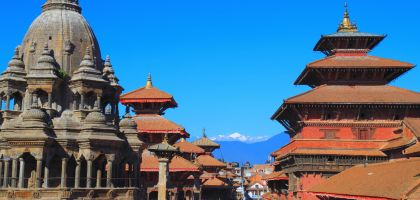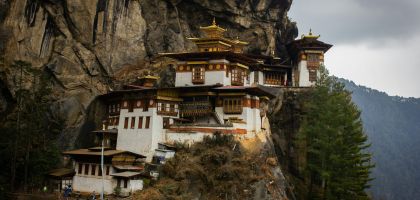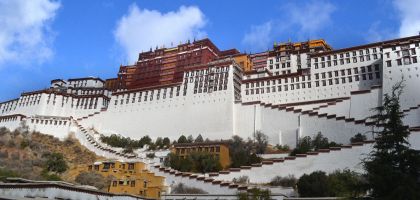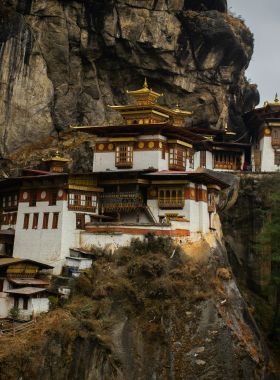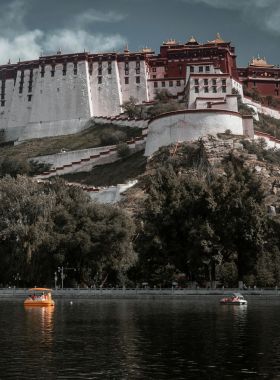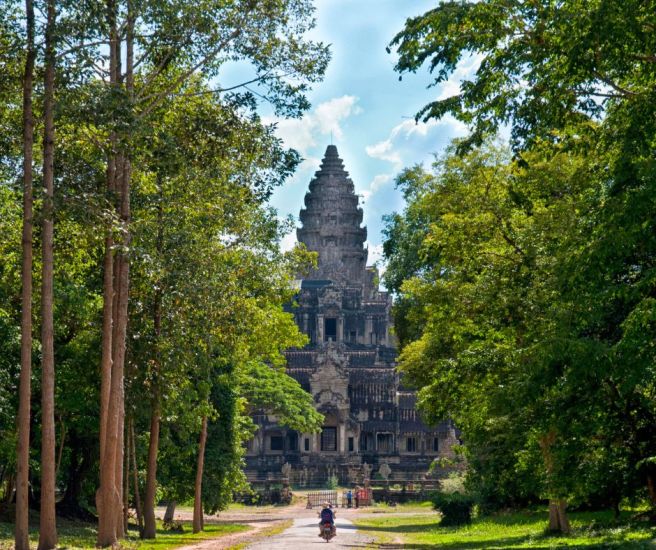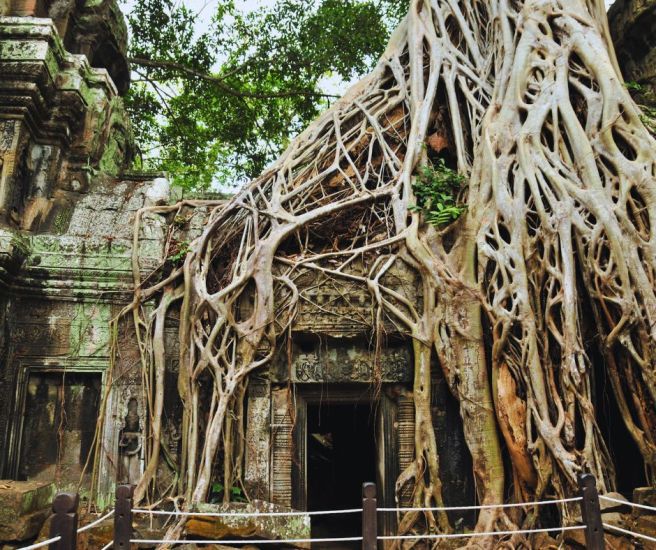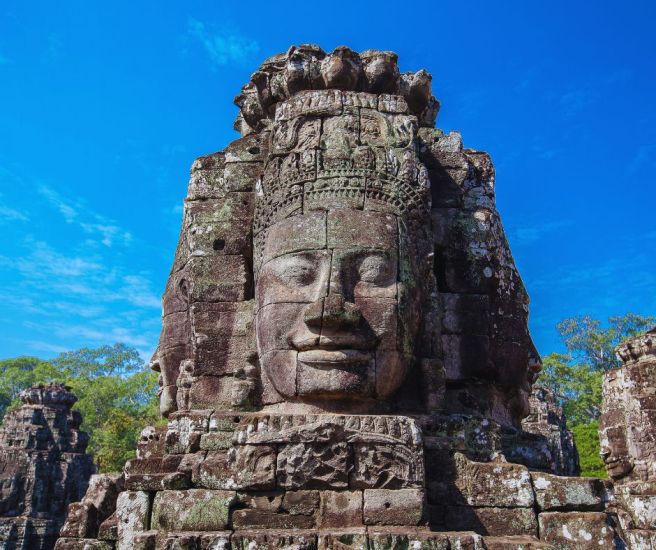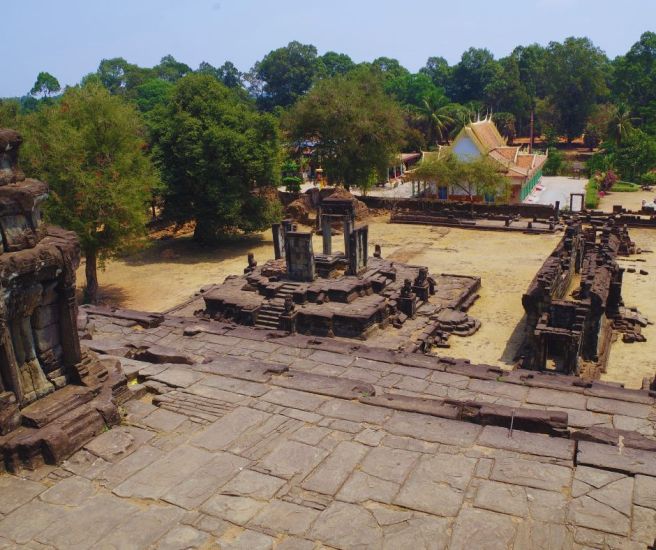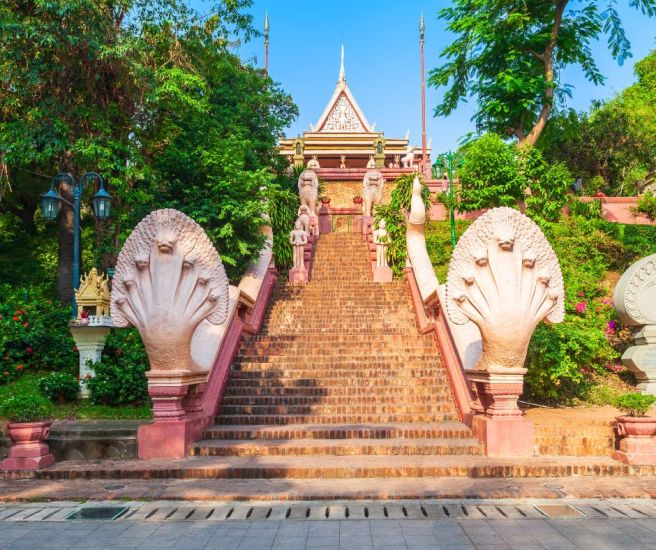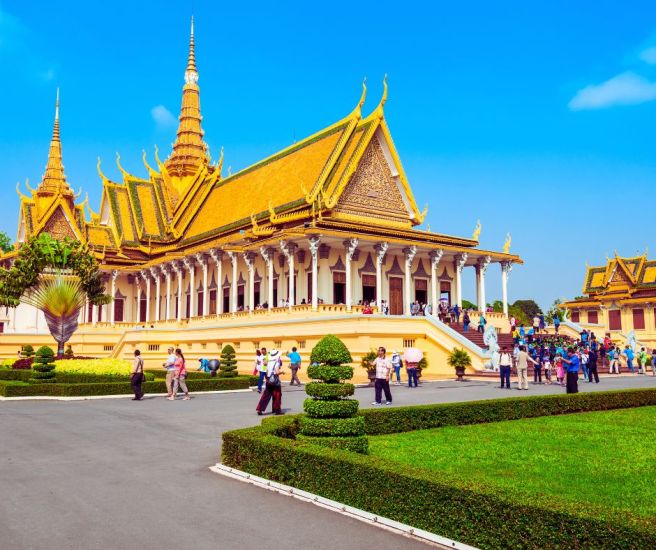Classic Cambodia
5 Days / Cambodia
Activity
Difficulty Level
Destinations
Trip Start / End
Accommodation
Travel Style
Best time to travel
Personalized Travel Advice

Dev Raj Nepal
+977 9851096523
Detailed Itinerary
01
DAY
01
Phnom Penh is a hectic, lively and captivating city where motorcycles intertwine in and out of traffic; vendors hawk their products and pedestrian just wander alongside the river. Visit the temple of Wat Phnom, Royal Palace, neighboring Silver Pagoda and National Museum. Splurge some time shopping for bargains and souvenirs at the art deco Central Market or in the warren of stalls at the expansive Russian Market.Overnight in Phnom Penh.
Phnom Penh
Phnom Penh is a hectic, lively and captivating city where motorcycles intertwine in and out of traffic; vendors hawk their products and pedestrian just wander alongside the river. Visit the temple of Wat Phnom, Royal Palace, neighboring Silver Pagoda and National Museum. Splurge some time shopping for bargains and souvenirs at the art deco Central Market or in the warren of stalls at the expansive Russian Market.Overnight in Phnom Penh.
02
DAY
02
Take a flight to Siem Reap from Phnom Penh and squander the next three days traveling around the striking Angkor temples. Angkor Wat is the biggest, best conserved and most devotedly vital of all the temples. It is reachable via a long pathway that gets into a sequence of courtyards, the walls of which are covered in elaborated stone carvings of extraterrestrial dancers. Along the external portico walls runs the longest uninterrupted bas-relief in the world, which recites the stories from Hindu mythology consisting of the eminent Churning of the Ocean of Milk.The equipped 12th century city of Angkor Thom covers an area of 10 square kilometers and includes many stone temples and other features to walk around including Terrace of the Elephants, Terrace of the Leper Kings, the ruined 11th century Baphoun temple, Royal Enclosure and Phimeanakas temple. Also visit Bayon temple, one of the most striking temples identified for its enormous stone faces smiling mysteriously down at you from every direction.Overnight in Siem Reap.
Phnom Penh – Siem Reap
Take a flight to Siem Reap from Phnom Penh and squander the next three days traveling around the striking Angkor temples. Angkor Wat is the biggest, best conserved and most devotedly vital of all the temples. It is reachable via a long pathway that gets into a sequence of courtyards, the walls of which are covered in elaborated stone carvings of extraterrestrial dancers. Along the external portico walls runs the longest uninterrupted bas-relief in the world, which recites the stories from Hindu mythology consisting of the eminent Churning of the Ocean of Milk.The equipped 12th century city of Angkor Thom covers an area of 10 square kilometers and includes many stone temples and other features to walk around including Terrace of the Elephants, Terrace of the Leper Kings, the ruined 11th century Baphoun temple, Royal Enclosure and Phimeanakas temple. Also visit Bayon temple, one of the most striking temples identified for its enormous stone faces smiling mysteriously down at you from every direction.Overnight in Siem Reap.
03
DAY
03
Banteay Srei is a spectacular 10th century Hindu temple constructed from deep red sandstone and covered in gracefully conserved subtle carvings. Distinct from the majority of the temples of Angkor, the mystifying Ta Phrom has been mostly left to the power of the living jungle and vast tree roots have injured themselves around the crushed remains. It appears very much as most of the Angkor monuments would have appeared when European explorers wobbled across them at first. Also visit Banteay Samre, a mid-12th century temple devoted to the lord Vishnu. In the evening watch and enjoy the sun set over Cambodian countryside from the upper terraces of a primeval temple. Overnight in Siem Reap.
Siem Reap
Banteay Srei is a spectacular 10th century Hindu temple constructed from deep red sandstone and covered in gracefully conserved subtle carvings. Distinct from the majority of the temples of Angkor, the mystifying Ta Phrom has been mostly left to the power of the living jungle and vast tree roots have injured themselves around the crushed remains. It appears very much as most of the Angkor monuments would have appeared when European explorers wobbled across them at first. Also visit Banteay Samre, a mid-12th century temple devoted to the lord Vishnu. In the evening watch and enjoy the sun set over Cambodian countryside from the upper terraces of a primeval temple. Overnight in Siem Reap.
04
DAY
04
Begin the day by visiting Chau Say Tevoda, a 12th century Hindu temple. While this temple is devoted to lord Shiva but the majority of the carvings are of Vishnu. Just to the north is Thommanon temple which reflects Chau Say Tevoda, as it was constructed around the same time and has a comparable plan. Many of Thommanon’s carvings are in outstanding condition and the colors of the primeval sandstone vary with the vibrant green of the jungle.Ta Keo was the first Angkorian monument to be built completely of sandstone and is devoted to Shiva. The peak of the central tower is 50 meters tall and is bordered by another four lower towers.
Banteay Kdei, also known as the “Citadel of Monks’ cells” is a gigantic 12th century Buddhist temple enclosed by four concentric walls which has not been refurbished and allocates the visitor to understand and experience what it may have seemed to be like originally. Just reverse is Sras Srang, a baray (reservoir) with a tiny island in the middle where only the stone base stays of what used to be a wooden temple.Also visit the 10th century temple of Prasat Kravan whose five brick towers were built for Hindus to worship and are distinguished for the bas-reliefs cut into the bricks on the internal walls.Fly to Phnom Penh from Siem Reap and overnight
Siem Reap
Begin the day by visiting Chau Say Tevoda, a 12th century Hindu temple. While this temple is devoted to lord Shiva but the majority of the carvings are of Vishnu. Just to the north is Thommanon temple which reflects Chau Say Tevoda, as it was constructed around the same time and has a comparable plan. Many of Thommanon’s carvings are in outstanding condition and the colors of the primeval sandstone vary with the vibrant green of the jungle.Ta Keo was the first Angkorian monument to be built completely of sandstone and is devoted to Shiva. The peak of the central tower is 50 meters tall and is bordered by another four lower towers.
Banteay Kdei, also known as the “Citadel of Monks’ cells” is a gigantic 12th century Buddhist temple enclosed by four concentric walls which has not been refurbished and allocates the visitor to understand and experience what it may have seemed to be like originally. Just reverse is Sras Srang, a baray (reservoir) with a tiny island in the middle where only the stone base stays of what used to be a wooden temple.Also visit the 10th century temple of Prasat Kravan whose five brick towers were built for Hindus to worship and are distinguished for the bas-reliefs cut into the bricks on the internal walls.Fly to Phnom Penh from Siem Reap and overnight
05
DAY
05
At the notorious Tuol Sleng Museum in the city of Phnom Penh, visitors discover about a chapter from Cambodia’s more recent and terrible past. Previously the Tuol Svay Prey High School in 1975 it became the interrogation and torture facility for the Khmer Rouge system. The prison now showcases photographs and displays thousands of sufferers that passed through the doors. Just outside Phnom Penh in rustic surroundings, the Killing Fields of Choeung Ek provide a harsh reminder of the violence under the Pol Pot regime. Thousands of people were executed here between the years of 1975 and 1978 and buried in mass graves.Visit Wat Phnom, the origin of the capital; according to legend, Phnom Penh was originated here when a woman named Penh found four Buddha statues and built the temple to accommodate them.Depart from Phnom Penh
Phnom Penh
At the notorious Tuol Sleng Museum in the city of Phnom Penh, visitors discover about a chapter from Cambodia’s more recent and terrible past. Previously the Tuol Svay Prey High School in 1975 it became the interrogation and torture facility for the Khmer Rouge system. The prison now showcases photographs and displays thousands of sufferers that passed through the doors. Just outside Phnom Penh in rustic surroundings, the Killing Fields of Choeung Ek provide a harsh reminder of the violence under the Pol Pot regime. Thousands of people were executed here between the years of 1975 and 1978 and buried in mass graves.Visit Wat Phnom, the origin of the capital; according to legend, Phnom Penh was originated here when a woman named Penh found four Buddha statues and built the temple to accommodate them.Depart from Phnom Penh
Includes / Excludes
Inclusions
-
3 meals a day.
-
English speaking licensed guide.
Exclusions
-
Drinks, tip and expenses of personal nature.
-
Extra expenses due to nature and unforeseen events.
-
Travel Insurance.
Trip Info
Winter (November-February): The best time to visit Cambodia is during the cool dry season from November to February. During these months, the weather is comfortably warm with lower humidity, making it ideal for exploring temples like Angkor Wat, walking through vibrant local markets, and cruising along the Tonle Sap Lake. Daytime temperatures usually range from 22 to 30°C, and the skies remain mostly clear. This is also peak tourist season, so major sites can be busy but the atmosphere is lively and festive. While March to May brings hotter temperatures, it is still a good time for travel if you can handle the heat. The monsoon season from June to October sees fewer crowds and lush landscapes but travel can be affected by heavy rain, especially in rural areas.
FAQs
Personalized Travel Advice

Dev Raj Nepal
+977 9851096523
